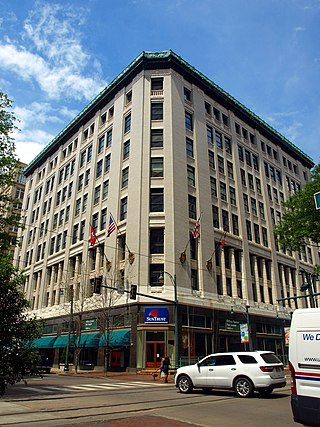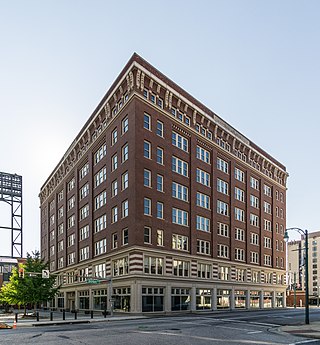The National Register of Historic Places (NRHP) is the United States federal government's official list of districts, sites, buildings, structures, and objects deemed worthy of preservation for their historical significance or "great artistic value". A property listed in the National Register, or located within a National Register Historic District, may qualify for tax incentives derived from the total value of expenses incurred in preserving the property.

This is a list of the National Register of Historic Places listings in Limestone County, Alabama.

This is a list of properties on the National Register of Historic Places in Hartford, Connecticut.

This is a list of the National Register of Historic Places listings in Prince George's County, Maryland.

This is a list of the National Register of Historic Places listings in Henry County, Virginia.
This is a list of the National Register of Historic Places listings in Montgomery County, Tennessee.
Hanker & Cairns was an architectural firm of Memphis, Tennessee. It was formed in 1903 as a partnership of William Julius Hanker and Baynard Snowden Cairns.

The Bank of Commerce and Trust Company Building is a historic building in Downtown Memphis, Tennessee, U.S.. It was built in 1929 for the bank of Commerce and Trust, later known as the National Bank of Commerce.

Hotel Claridge is a historic hotel building in Memphis, Tennessee, U.S.. It was built in 1924 for Charles Levy and Morris Corn, two businessmen from St. Louis, Missouri. Its construction cost $1.5 million, and it was designed by the Memphis architectural firm of Jones & Furbringer and the St. Louis firm of Barnett, Haynes & Barnett.

The B. Lowenstein & Brothers Building is a historic building in Memphis, Tennessee, U.S. It was built in 1924 for the Lowenstein Company, a clothing company founded by Benedict Lowenstein, a German immigrant, in 1855. It was designed in the Beaux-Arts architectural style by Hanker & Cairns. It has been listed on the National Register of Historic Places since June 16, 1983.

The Eli Rayner House is a historic house in Memphis, Tennessee, U.S.. It was built in 1856 for Eli Rayner, a planter, and his wife May A. Jones. The Rayner were well-connected: Rayner's first cousin was Kenneth Rayner, and their daughter Irene married Thomas B. Turley.

The William R. Moore Dry Goods Building is a historic building in Memphis, Tennessee, U.S.. It was built in 1913 for the William R. Moore Dry Goods company, founded in 1859, and designed by prominent Memphis architect Charles O. Pfeil. It has been listed on the National Register of Historic Places since August 26, 1982.

The Tennessee Club, also known as the Overall Goodbar Building, is a historic townhouse in Memphis, Tennessee, U.S.. Designed by architect Elah Terrell, it was built in 1888 for two doctors by the names of Overall and Peete. Colonel William F. Taylor, a veteran of the Confederate States Army who served under General Nathan Bedford Forrest during the American Civil War, also had an office in the building. By 1890, it became the home of the Tennessee Club, a social club founded in 1875. From 1907 to 1927, it was home to Overton and Overton, a real estate firm. It has been listed on the National Register of Historic Places since April 22, 1982.












